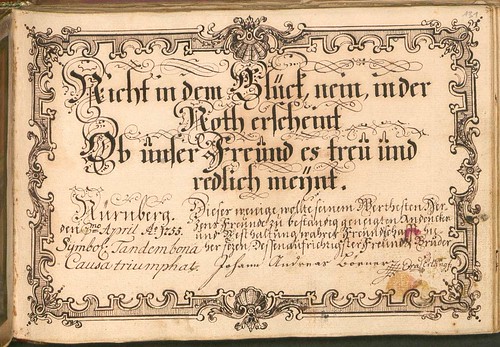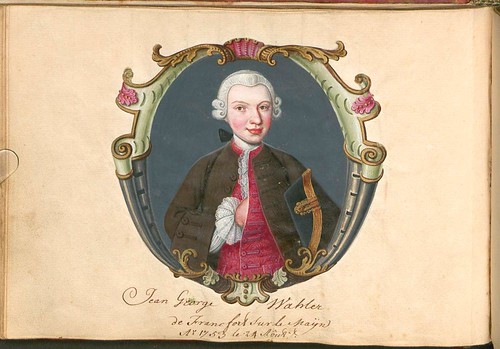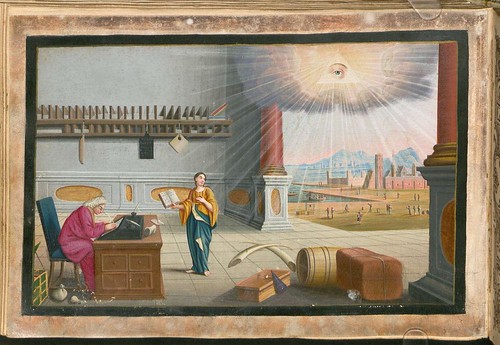














'Stammbuch des Johann Christian Sigmund Mönch aus Jena' - BSB Cgm 9256 is online at Bayerische Staatsbibliothek. [1754 onwards] Click 'Miniaturansicht'. There are about 350 pages: half are blank, many of the remainder have otherwise unremarkable hand-written tributes. All of the above images were spot/background cleaned to at least some extent.
(Stammbuch = Liber Amicorum = Friends' Book)
"Stammbücher appear for the first time in the 16th and 17th centuries in the German- and Dutch-speaking areas of Europe, where it had become fashionable among graduating university students to have one’s personal bible signed by classmates and instructors. Soon inscriptions went beyond simple signatures to include reminiscences of common experiences, good wishes for the future, or a favorite passage from literature or poetry. Publishers foreseeing a lucrative market printed bibles with empty pages and soon also turned out small decorated books with only empty pages.In the archives: Liber Amicorum; Alba Amicorum; Simon Haendel's Stammbuch; Felix and Friends and somewhat related: The Fisch Wappenbuch.
Eventually these albums were not only passed around at graduation but accompanied a student throughout his life, gathering entries from relatives, friends, and important acquaintances. Others also took up the custom, especially those who traveled as part of their training or social upbringing, such as aristocrats, tradesmen, military officers, poets, or musicians. Stammbücher were usually circulated at a time of parting and served the bearer not only as a sentimental remembrance but as a collection of references by association in his pursuit of a professional or social career. Inscriptions were personal, yet frequently included literary quotes, showing the writer’s—and by extension the bearer’s—social and intellectual standing. The messages emphasized values such as intellectual and political freedom, hard work, honesty, forthrightness, self-reliance, and friendship. Good wishes for happiness, health, good fortune, and prosperity were always included."
Source: *“Dies schrieb Dir zur Erinnerung. . .” From Album Amicorum to Autograph Book* by Antje Petty, Director of the Max Kade Institute For German-American Studies at the University of Wisconsin-Madison.




No comments:
Post a Comment